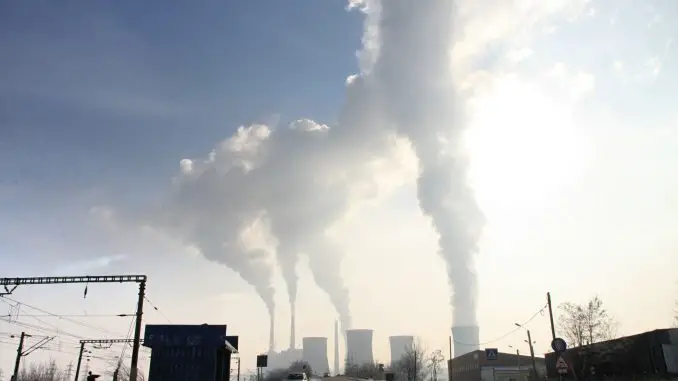
Thanks to the “natural greenhouse effect” it is possible to live on parts of the earth that would otherwise have been too cold to live on. According to research, it would generally have been 30 degrees colder without this greenhouse effect.
Basically, this is something good, but the problem is that emissions of large amounts of greenhouse gases create a “reinforced greenhouse effect”. The average temperature thus rises further, which is usually called global warming. This, in turn, creates imbalances in the environment, melts glaciers and raises the water level. In the long term, this may mean that some land areas will no longer be habitable.
In order to slow down this development, it is important that both companies and individuals take their responsibility and do what we can. In terms of emissions, there are mainly three areas that dominate. Thus, it is also there that the biggest positive changes can be made.
Combustion of fossil fuels
When oil, coal and other fossil fuels are burned, carbon dioxide that has been bound in these materials is released. Private individuals can reduce their emissions by opting out of heating oil, reducing their international travel by air and minimizing car travel. Even in companies and in the industry, vehicle traffic weighs heavily on carbon dioxide emissions, although they also have large emissions from their machinery parks.
For industries, it is not just about reducing emissions but also using energy as much as possible in order to minimize energy requirements. Something that is both positive from an environmental and economic perspective.
Forest logging increases emissions
Even when forest products are fired, carbon dioxide is released. If trees are planted in an equal amount, it becomes a “zero-sum game”. This is because the trees bind carbon dioxide. In Sweden, very good forestry also takes place with laws and regulations regarding replanting.
The big problem lies in countries where harvesting is done on a large scale without replanting. As a result, carbon dioxide is released at the same time as there is less vegetation that can handle the released greenhouse gas. At this point, it is largely only the forest industry that can effect a change, but you as a consumer obviously influence through the products you choose to buy, not only in the case of wood products but also your food. A large amount of forest is harvested each year to free up land for growing crops such as soybeans and palm trees to extract palm oil.
Agriculture
In agriculture, various types of greenhouse gases are emitted. What matters most is produced in the meat industry. This is mainly due to two aspects. Firstly, agriculture requires large areas, production of feed and a large amount of energy. Second, meat production creates an emission of methane gas.
If you compare the three main points, then it is primarily “Combustion of fossil fuels” that private individuals can have a significant impact. At the same time, it is always possible to support local forestry and organic agriculture to indirectly create the opportunity for companies to invest more in environmental long-term solutions.
Not just carbon dioxide
When talking about greenhouse gases, it is mainly carbon dioxide mentioned. The reason is that carbon dioxide accounts for the greatest negative climate impact. But there are greenhouse gases that are significantly worse than carbon dioxide, but which are emitted in significantly smaller quantities.
For example, methane gives 34 times as much impact on the environment and nitrous oxide (N2O) is 298 times stronger. This is one reason why it is so important to leave old refrigerators to recycling stations. Freon (which is in old refrigerators) is estimated to be over 7000 times worse for the environment than carbon dioxide.
Although there are substances that are more dangerous than carbon dioxide, it is nevertheless by reducing the emission of carbon dioxide that the most obvious change can occur in the development of the greenhouse effect.
Small details that make a big difference
Energy Saving – Additional insulation and purchase heat pump to take advantage of heat as much as possible.
Remove oil – Select the oil as the heat source for the house. Of the heat sources available, district heating is best for the environment.
Choose eco-labeled – This applies not only to food but also, for example, electricity companies
Eat Vegetarian – Starting with one day a week makes a big difference. One kilo of beef corresponds to a carbon dioxide emissions index of 43.4. It can be compared to the wheat of 0.3 or bird of 2.4.
Use public transport – Or take the bike.
Buy an environmentally friendly car – Do you have to have a car so buy one that draws a little gasoline, or why not an electric car?
Don’t fly – The flight accounts for a very large part of the emissions. If fewer flights were to be made, demand would be reduced and fewer departures would be made every week. Those who fly to Thailand round-trip create (per person) the same amount of greenhouse gas emissions that a car takes on an average of one year.
Recycle and cook – Making, recycling and shopping at Second-Hand means that fewer products need to be produced and transported.
Save ethical – Save in ethical or environmental funds. These have rules to invest only in companies that work for a better environment in the long term.
Leave a Reply